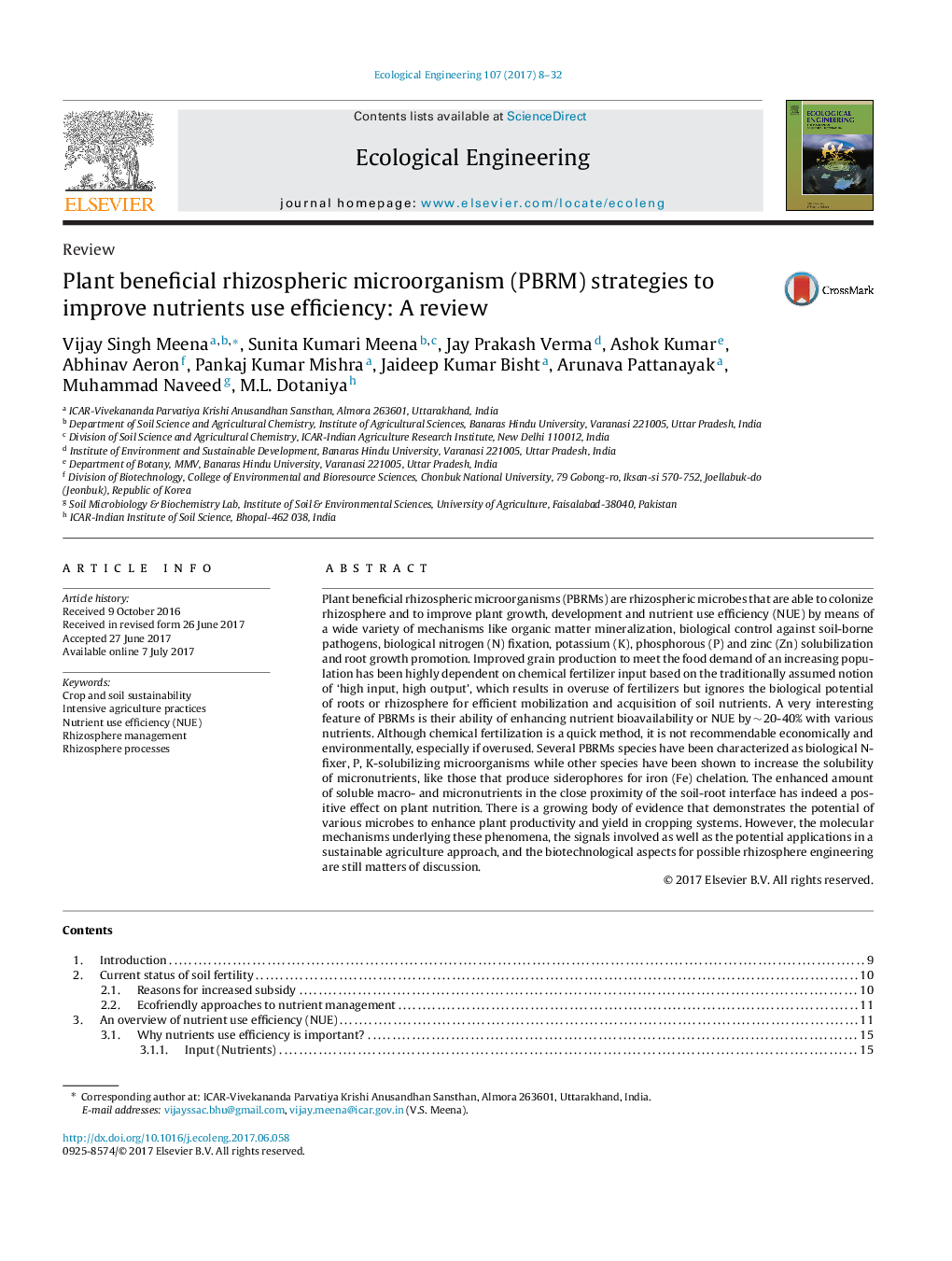| Article ID | Journal | Published Year | Pages | File Type |
|---|---|---|---|---|
| 5743656 | Ecological Engineering | 2017 | 25 Pages |
â¢Combined inoculation of PBRM with mineral fertilization increased NUE.â¢PBRM enhance stress tolerance under multi-stress conditions.â¢Ecofriendly approach to mitigate NUE under nutrients deficient soils.â¢Discussion on recent developments in PBRM interactions under agro-ecosystem.
Plant beneficial rhizospheric microorganisms (PBRMs) are rhizospheric microbes that are able to colonize rhizosphere and to improve plant growth, development and nutrient use efficiency (NUE) by means of a wide variety of mechanisms like organic matter mineralization, biological control against soil-borne pathogens, biological nitrogen (N) fixation, potassium (K), phosphorous (P) and zinc (Zn) solubilization and root growth promotion. Improved grain production to meet the food demand of an increasing population has been highly dependent on chemical fertilizer input based on the traditionally assumed notion of 'high input, high output', which results in overuse of fertilizers but ignores the biological potential of roots or rhizosphere for efficient mobilization and acquisition of soil nutrients. A very interesting feature of PBRMs is their ability of enhancing nutrient bioavailability or NUE by â¼Â 20-40% with various nutrients. Although chemical fertilization is a quick method, it is not recommendable economically and environmentally, especially if overused. Several PBRMs species have been characterized as biological N-fixer, P, K-solubilizing microorganisms while other species have been shown to increase the solubility of micronutrients, like those that produce siderophores for iron (Fe) chelation. The enhanced amount of soluble macro- and micronutrients in the close proximity of the soil-root interface has indeed a positive effect on plant nutrition. There is a growing body of evidence that demonstrates the potential of various microbes to enhance plant productivity and yield in cropping systems. However, the molecular mechanisms underlying these phenomena, the signals involved as well as the potential applications in a sustainable agriculture approach, and the biotechnological aspects for possible rhizosphere engineering are still matters of discussion.
Graphical abstractThe rhizosphere is a narrow zone of soil (a few millimetres wide) that surrounds and is influenced by plant roots. The schematic shows magnified pictures of the rhizosphere, Microorganisms and root exudates in the rhizosphere. (1). Biofertilization, Rhizobacteria are able to promote plant growth by improving the nutrient uptake of plants. (2). Rhizoremediation and stress control, Plants exposed to stress conditions and pollutants show an increase in the ethylene levels that lead to a metabolism disturbance and plant damage. PGPR that contain the enzyme ACC-deaminase enhance plant growth and development by decreasing plant ethylene levels. (3). Phytoremediation, some PGPR are able to degrade or remove pollutants. (4) Phytostimulation, production of phytohormones like IAA, GAs, cytokinins and certain VOCs alter the root morphogenesis, proliferation and enhance plant mineral uptake and root exudation, which promote the plant growth. (5) Arbuscular mycorrhizal fungi (AMF) on a corn root. (6). Changes in soil properties by the microbial action. (7) Interaction among microorganisms and plant root nodules of pea (8). Interaction within the microbes, multitude of direct interactions between these. (9) Electron microscopic image of Arbuscular mycorrhizal fungi (AMF) associated with corn root.Download high-res image (296KB)Download full-size image
